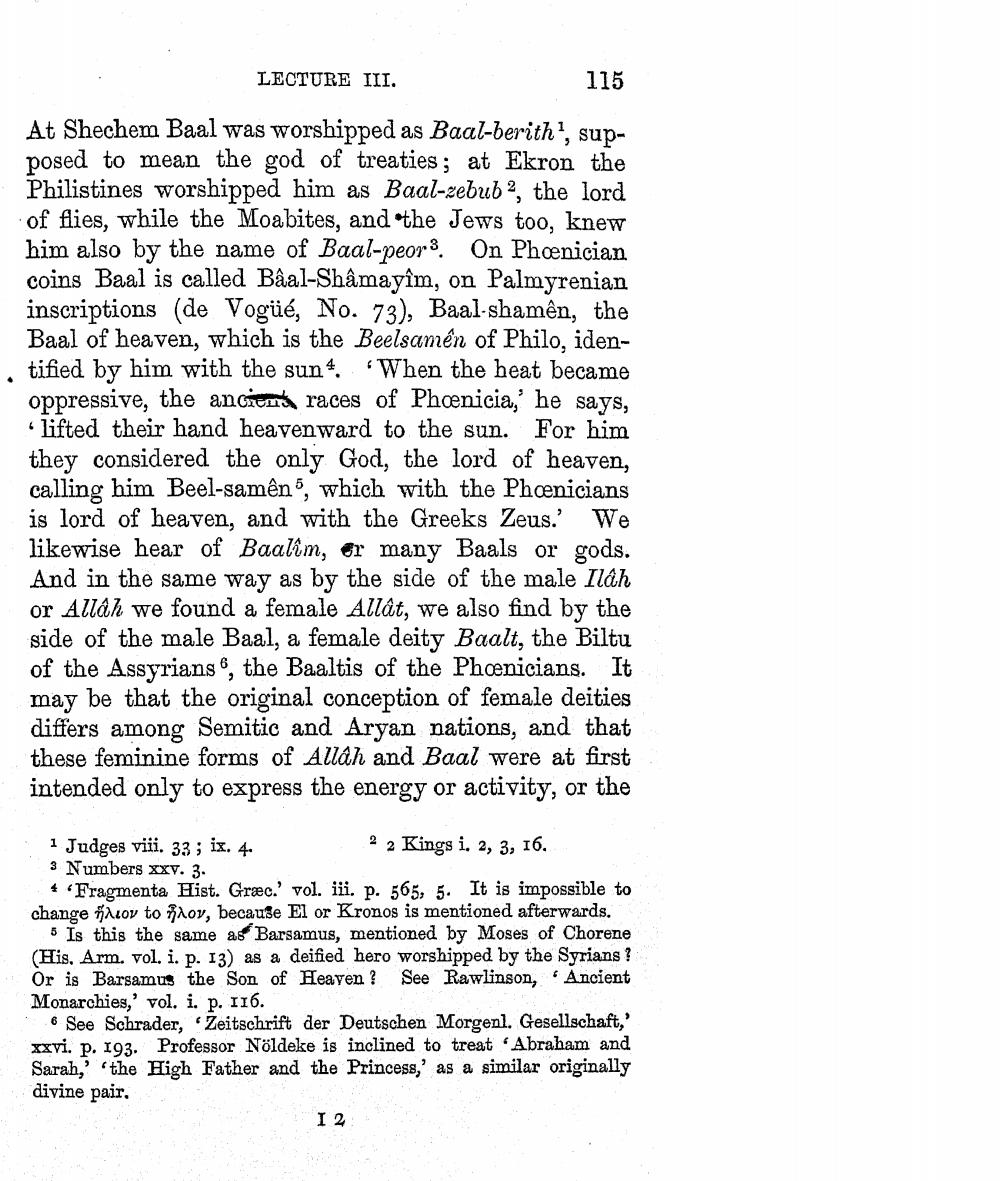________________
115
At Shechem Baal was worshipped as Baal-berith1, supposed to mean the god of treaties; at Ekron the Philistines worshipped him as Baal-zebub 2, the lord of flies, while the Moabites, and the Jews too, knew him also by the name of Baal-peor. On Phoenician coins Baal is called Bâal-Shâmayîm, on Palmyrenian inscriptions (de Vogüé, No. 73), Baal-shamên, the Baal of heaven, which is the Beelsamén of Philo, identified by him with the sun. 'When the heat became oppressive, the ancien races of Phoenicia,' he says, lifted their hand heavenward to the sun. For him they considered the only God, the lord of heaven, calling him Beel-samên", which with the Phoenicians is lord of heaven, and with the Greeks Zeus.' We likewise hear of Baalim, er many Baals or gods. And in the same way as by the side of the male Ilâh or Allah we found a female Allât, we also find by the side of the male Baal, a female deity Baalt, the Biltu of the Assyrians 6, the Baaltis of the Phoenicians. It may be that the original conception of female deities differs among Semitic and Aryan nations, and that these feminine forms of Allah and Baal were at first intended only to express the energy or activity, or the
1 Judges viii. 33; ix. 4.
3 Numbers XXV. 3.
LECTURE III.
22 Kings i. 2, 3, 16.
Fragmenta Hist. Græc.' vol. iii. p. 565, 5. It is impossible to or to λov, because El or Kronos is mentioned afterwards.
change
5 Is this the same as Barsamus, mentioned by Moses of Chorene (His. Arm. vol. i. p. 13) as a deified hero worshipped by the Syrians? Or is Barsamus the Son of Heaven? See Rawlinson, Ancient Monarchies,' vol. i. p. 116.
See Schrader, Zeitschrift der Deutschen Morgenl. Gesellschaft,' xxvi. p. 193. Professor Nöldeke is inclined to treat Abraham and Sarah,' the High Father and the Princess,' as a similar originally divine pair.
I 2




